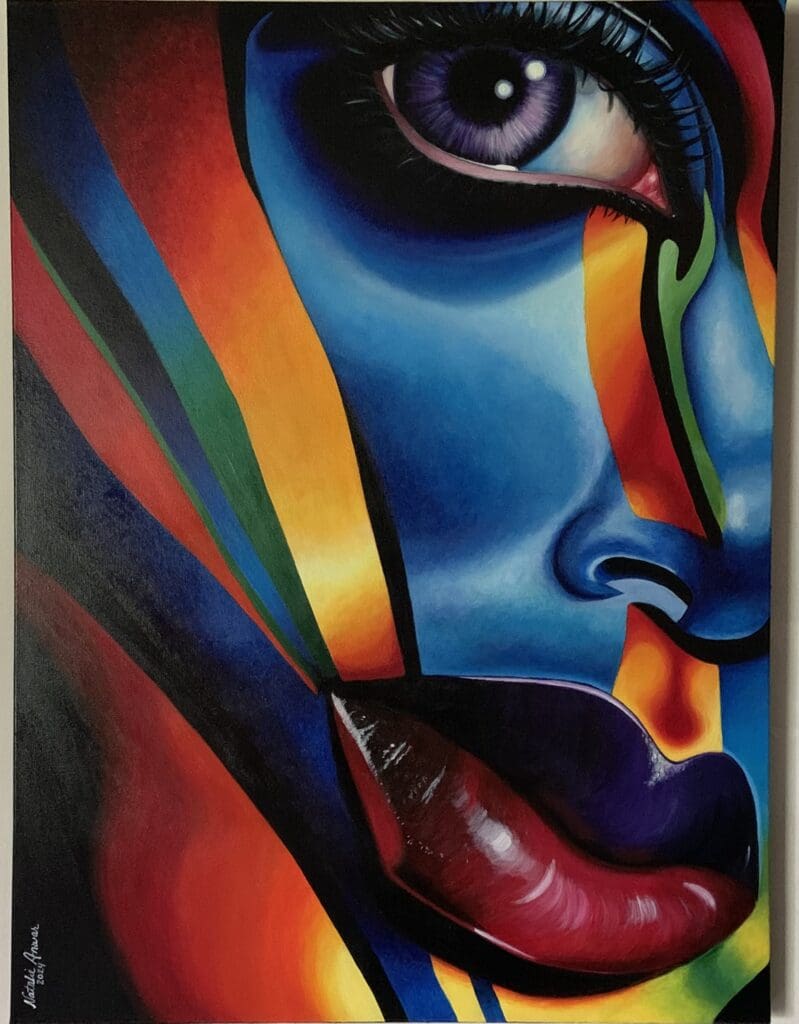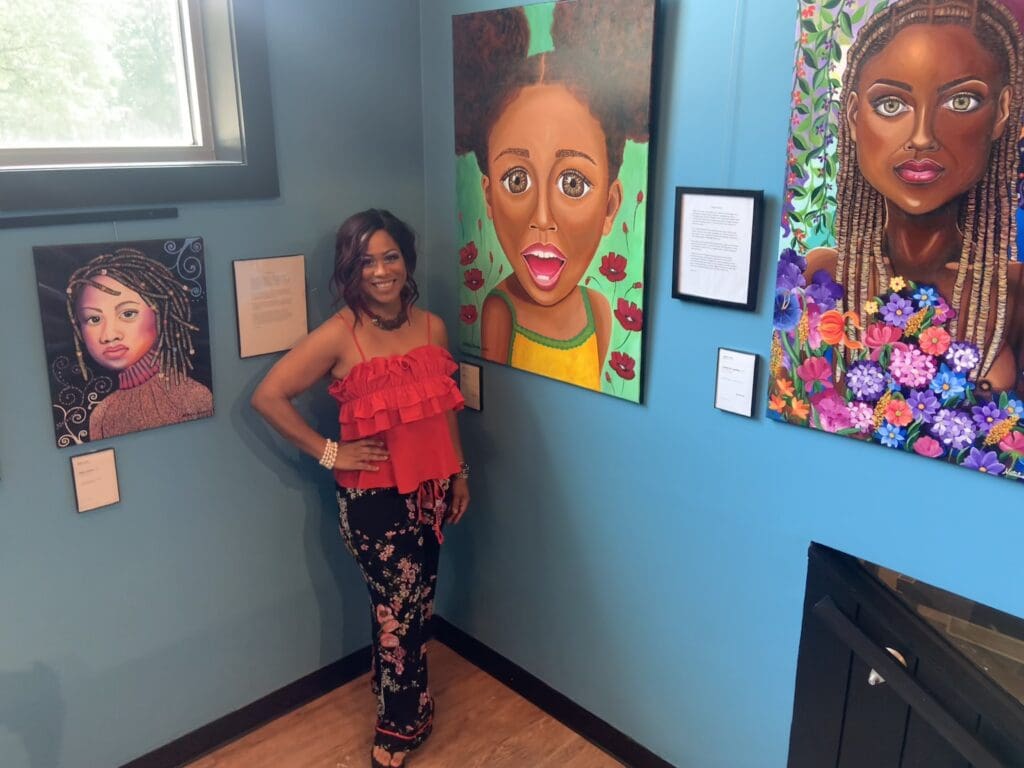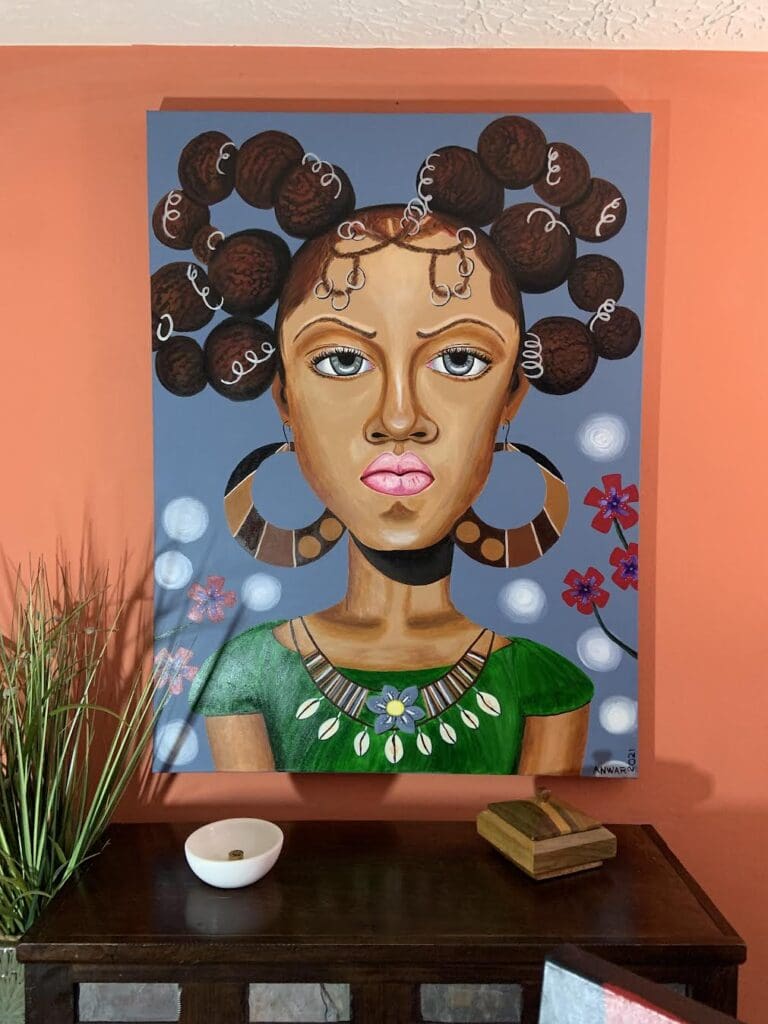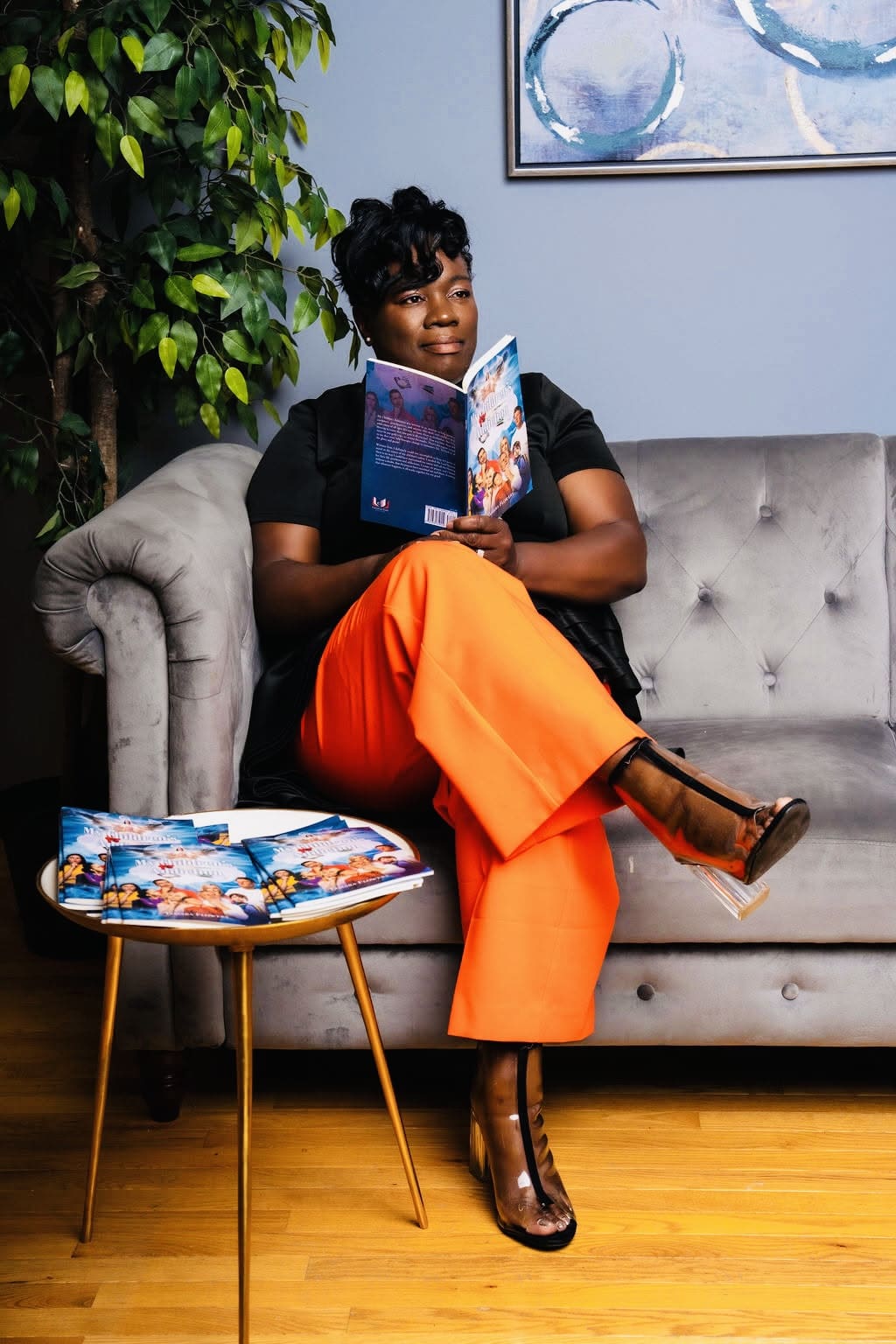A Muse in a Garden by Natalie Anwar 24” x 36” x 1/2”
Courtesy photos provided by Natalie Anwar
**** Correction: Natalie Anwar’s exhibit is at the Port Authority Midtown Bus Terminal and not the New York City Midtown Bus Terminal.

I am by Natalie Anwar 30” x 40” x 1”
By TNCPNEWS
Natalie Anwar said her call to the arts was driven and inspired by her children. Before fully embracing her creative spirit, Anwar honed her marketing skills at Tesoro Corporation and Sandra Steen Consulting, LLC. Her academic background includes a BS in Advertising from the Art Institute of Pittsburgh and an MS in Communication from Lasell University. Initially, she aspired to become the Creative Director of a Fortune 200 company and grace the cover of Forbes magazine with the caption, “Natalie Anwar – the woman every man wants to be.”
However, after her triplets were diagnosed with autism, her dreams took a different turn. She still hoped to remain connected to the world of advertising, but the reality of autism brought unforeseen challenges.
“What many people don’t understand about autism is how isolating life becomes,” Natalie shared. As her children grew older, she realized that people were less inclined to see the potential in her children that she saw, or at least, they were less inclined to invest in that potential.
She said it was a constant struggle to get people to do their jobs, for schools to provide the necessary support, and to face retaliation for advocating for her children’s legal rights. “Because my children didn’t have the verbal skills, they couldn’t tell me if they’d been mistreated or felt treated unfairly,” she explained. “I felt alone. The weight was completely on my shoulders.”
Natalie’s art journey began with photography, which she found symbolic. “I would take pictures of things and pick out, sometimes the worst photo, and transform it. It was my way of saying, ‘Potential is everywhere. You just have to wanna see it and see it through.’” As she transitioned to painting, she experienced a subconscious shift. “Now that you’ve had enough practice taking pictures of what is and changing it, how about you just create the picture you want,” she reflected, attributing part of this shift to the COVID-19 pandemic and the ensuing lockdowns.
The pandemic
During this period, Natalie faced immense challenges. She had just moved to a new school district to get a fresh start, hoping for better days, only to see her life crumble in ways that are still hard to retell because she continues to experience them. Without her children, she believes she probably would never have made any art or discovered so much about herself. “Every painting I did reflected my emotional state of what was happening within my life,” she said.
The most disheartening aspect was not autism itself but the struggles navigating a broken mental health system: with mental health professionals, medical professionals, and government agencies and policies. “I grieved because I could not get what I needed for them, when I needed them. Everything that gave them stability had been taken away from us through the mandates. And I would further grieve for the weeks my children sat in the hospital emergency room and the months they spent in a psychiatric hospital—not because they needed psychiatric help, but because I lacked adequate trained support staff in the home to keep them safe.”
Natalie chose portraits to highlight the whole face, as mask mandates hindered her children’s ability to discern the motives of people wearing them. Most of her subjects are youthful, not only because of her children’s age but also because “all of our trauma begins in childhood.” She added, “Trauma made beautiful. Trauma made my art. For whatever talent I have, I wouldn’t want anyone to have to go through what I went through to develop it. I don’t think they would’ve lasted any length of time. Not as a single mother. Not as a woman of color. Not raising young black men. And certainly not with identical triplets with autism full of testosterone and going through puberty. You don’t see that every day… if you’ve ever seen it at all. My family IS a case study.”
The process
Natalie painted her first artwork, “Eve,” in 1988, but it would be another 22 years before she picked up a paintbrush again. “I’ve always wanted to paint,” Natalie recalled, “but when my children were smaller, I was afraid I would get paint all over the carpet.” When the pandemic hit, her interest in photography waned due to the restrictions, and she turned to painting. With her children older, she no longer had excuses not to pursue her passion, which also served as her therapy.
Initially, the only people who saw her paintings in person were government and health officials working with her family, their therapists and teachers, and some family members. “These people knew me and my story intimately, and maybe they were unconsciously being a bit more kind due to my situation” she explained. She would also post her paintings on social media, receiving comments and likes, but it wasn’t until a respected artist friend invited her to showcase her art at an event—Black Wallstreet Lansing in June 2023—that things began to change.
“It was an honor to exhibit alongside my favorite local artists once again, Brian Whitfield, Brian Snyder, and Julian VanDyke,” Natalie shared. The first time was at Arts Night Out in celebration of Black History month in 2019. Brian Whitfield had previously encouraged her to participate in ArtPrize 7 many years ago, a pivotal moment in her artistic journey. The feedback she received from these admired artists marked a significant turning point for her. “Julian VanDyke said he wanted a picture I had titled ‘Buttercup.’ Like… was he freaking kidding me!”
Around that time, Brian Whitfield showed her his art lab and many other creations, which amazed her. Brian Snyder’s exhibit at the Lansing Art Gallery, featuring his aboriginal art, inspired the sweater in her “Child of Judah” painting, now displayed in Port Authority Midtown Bus Terminal.
One particularly moving moment occurred during a Zoom meeting with professionals regarding her two children in the hospital. The head of psychiatry for the State of Michigan attended and offered feedback on “Child of Judah.” “The feedback he gave me moved me,” Natalie reflected. “It wasn’t so much what he said, which was impactful in itself, but his tone and how he looked when he said it.”
“Buttercup” and “Child of Judah” reflect poignant times in Natalie’s life, capturing the emotional depth of her experiences and the profound impact of her artistic journey.
Log on to www.tncpnews.com to see exclusive photos of her artwork.

Natalie Anwar at Sycamore Creek Church in East Lansing in May of 2024.

Buttercup by Natalie Anwar 30″ x 40″ x 1″




